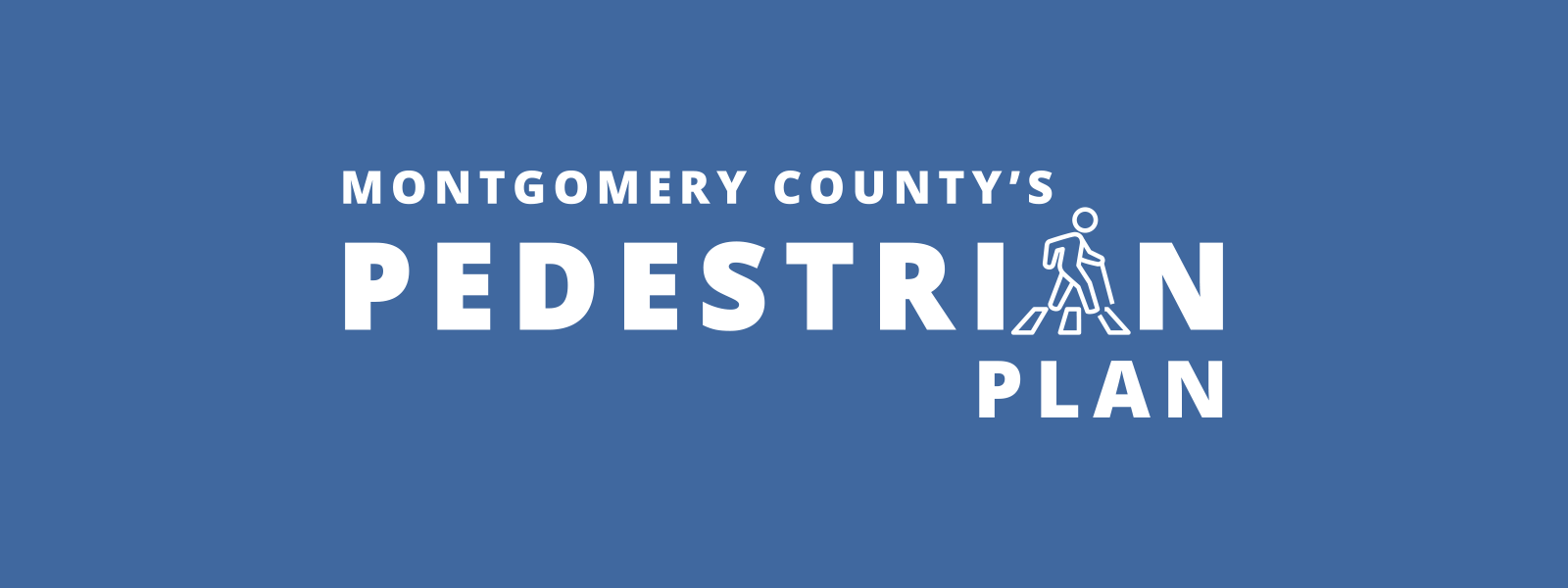
Pedestrian Level of Comfort Map is part of countywide Pedestrian Master Plan underway to make walking and rolling safer and more comfortable
SILVER SPRING, MD – The Montgomery County Planning Department, part of the Maryland-National Capital Park and Planning Commission, has created the interactive Pedestrian Level of Comfort Map as part of its ongoing Pedestrian Master Plan. The Pedestrian Master Plan is an effort to make walking and rolling throughout Montgomery County safer and more comfortable, convenient and direct.
The Pedestrian Level of Comfort Map allows community members to visualize the varying comfort of the county’s sidewalks, pathways, trails and street crossings for pedestrians. Users can pan and zoom around the county map, clicking on different colored pathways and crossing segments to learn about their scoring based on current conditions.
Each segment of the pedestrian network is rated from Unacceptable at the low end up to Very Comfortable at the high end. The scoring accounts for different aspects of the pedestrian experience, including pathway width, the width of buffers between pedestrian pathways and roads, posted speed limit, presence of on-street parking or a separated bike lane and other conditions.
Purple pedestrian icons on the map can be clicked for viewing a video of pedestrians walking in that location. Map users can share what comfort level they believe the video segment represents, using the survey form below the video. This tool allows planners to adjust the scoring of the pathway to be better tailored to the Montgomery County experience.
The Pedestrian Master Plan project team is currently collecting data on the county’s pedestrian network – all of its sidewalks, pathways, trails and streets – to understand how comfortable it is to be a pedestrian in different places. The Pedestrian Level of Comfort Map is part of that effort.
To date, the project team has analyzed pedestrian networks in Fairland, Olney, Silver Spring, Bethesda and Wheaton. Over the coming months, the rest of the county will be studied for its pedestrian comfort level.
View the Pedestrian Master Plan video recap from the Bethesda community meeting.
The project team will use the Pedestrian Level of Comfort Map and other tools to analyze how well different neighborhoods are comfortably connected to parks, schools, transit stops, libraries, and other important regional destinations so improvements to pathways and street crossings can be prioritized.
To learn more about the Pedestrian Master Plan, attend an upcoming community meeting with the Montgomery Planning team:
- Wednesday, November 6, 2019, 7 to 9 p.m. at the Upcounty Regional Services Center (12900 Middlebrook Road, Germantown, MD). RSVP online to attend the Germantown meeting.
- Wednesday, November 13, 6:45 to 8:15 p.m. at the Wheaton Regional Library (11701 Georgia Avenue, Wheaton, MD). RSVP online to attend the Wheaton meeting.
At both events, Montgomery Planning staff will discuss the purpose and timeline for this countywide effort and gather feedback from attendees about local walking conditions, challenges and ideas for the plan.
Background on Pedestrian Master Plan
The new Pedestrian Master Plan, now being developed by Montgomery Planning’s Functional Planning and Policy Division, will address all reasons for walking – commuting to and from work or school, running errands, recreation, entertainment, exercise and everything in between. Planner recommendations will support making walking universally accessible to county residents of all ages and abilities and will consider walking by foot (including with a cane, a walker or a stroller), by wheelchair or by mobility scooter.
The Pedestrian Master Plan will identify best practices, analyze information from people who walk and roll and examine ways of improving the pedestrian experience using several analytical tools, including a pedestrian comfort analysis and a crash analysis. The resulting Pedestrian Master Plan will provide county leaders and agencies, such as Montgomery County Department of Transportation and the Department of Permitting Services, recommendations and guidance related to:
- Prioritization of pedestrian pathways and safe crossings.
- Pedestrian-supportive policies and operational practices.
- Pedestrian design toolkit of treatments and operational approaches to traffic calming, signal timing, accessibility features and more.
The Pedestrian Master Plan will complement the 2018 Bicycle Master Plan, Thrive Montgomery 2050 planning and other Vision Zero-related efforts to make streets safer and more accessible, including the 2019 Veirs Mill Corridor Master Plan and 2019 Aspen Hill Vision Zero Study.